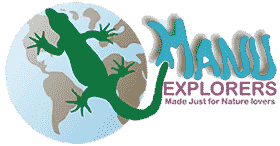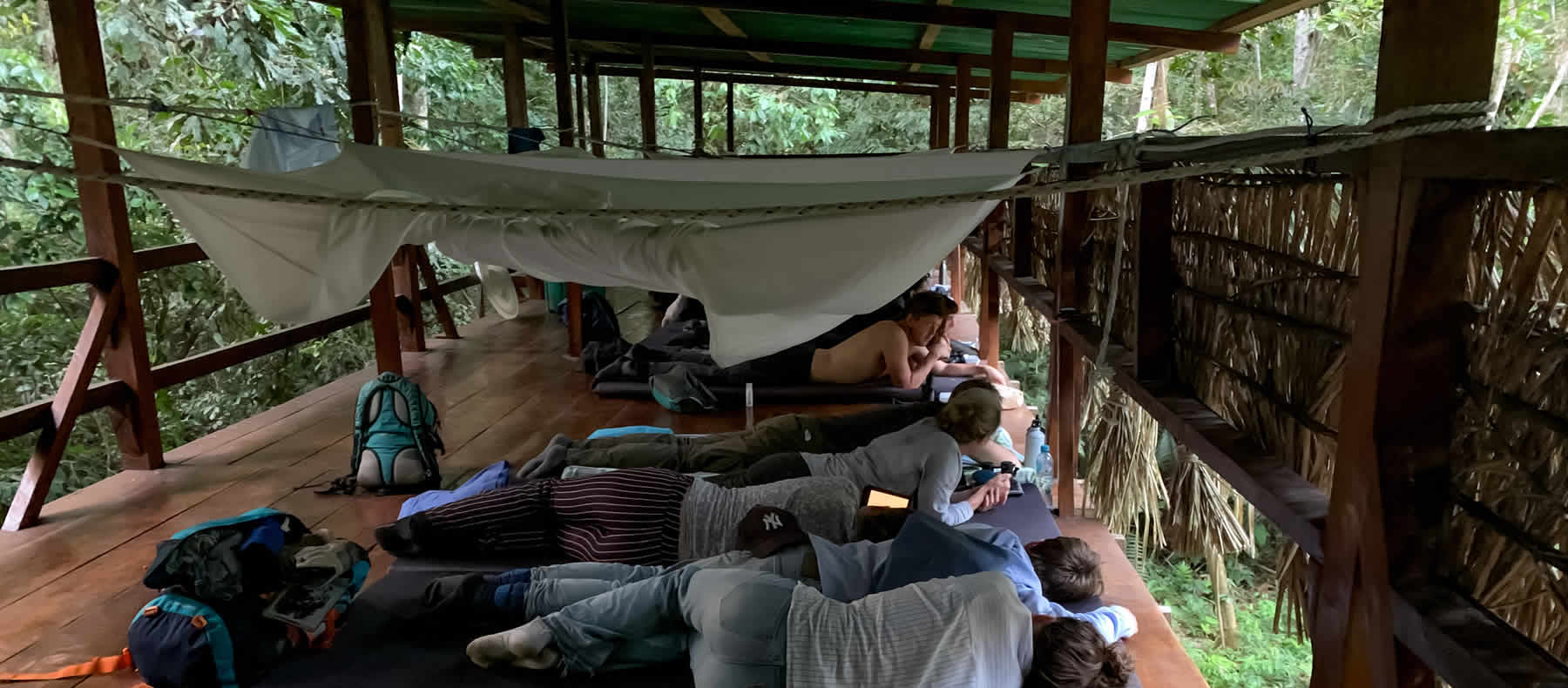All you need to know before travel with us
All you need to know before travel with us!
Everything you need to know before traveling with us to Manu Park Rainforest, please read below, below we are sending you additional information about our activities, we are including recommendations on how to behave while traveling and we are also giving you a list of things to bring with you to be prepared for your trip.
How far are you going into Manu Park?
The Manu Biosphere Reserve is located southwest of Peru, partially located in the regions of Madre de Dios and Cusco, in the provinces of Manu and Paucartambo. With a territory of 1,909,800 has is divided into three zones: The National Park or Nucleo Zone, with 1,532,806 ha; Reserved Zone, with 257,000 ha; and Cultural Transition Zone, with 120,000 ha.
It ranges from 300m at the confluence of the Manu River with the Alto Madre de Dios River, to 4,200 meters at the summit of the mountain Apu Kañahuay. Some researchers believe that in the virgin areas of this reserve is found the Païtiti or the lost city of the Incas.
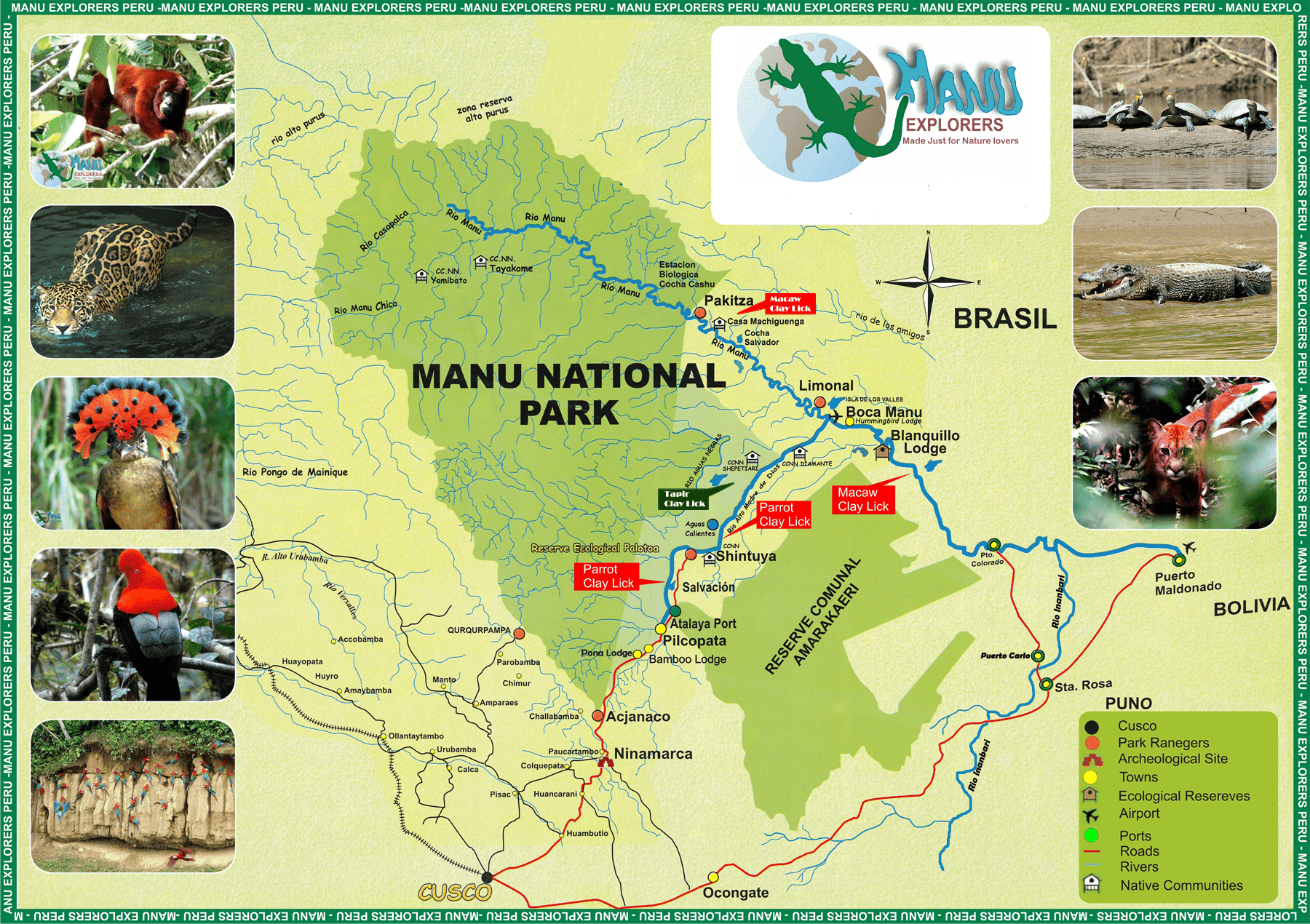
Nucleo Zone: an area dedicated for conservation, no one can access into this area.

Cultural Zone: This area it’s also known as the Biosphere Reserve Zone and Buffer Zone, this is an area found on the left side of alto Madre de Dios River. This area is a multipurpose zone because it can be used for farming and conservation. At this area extractive activities like fishing, recollection, Lumber and hunting are allowed. the following are the tours that visit this area:
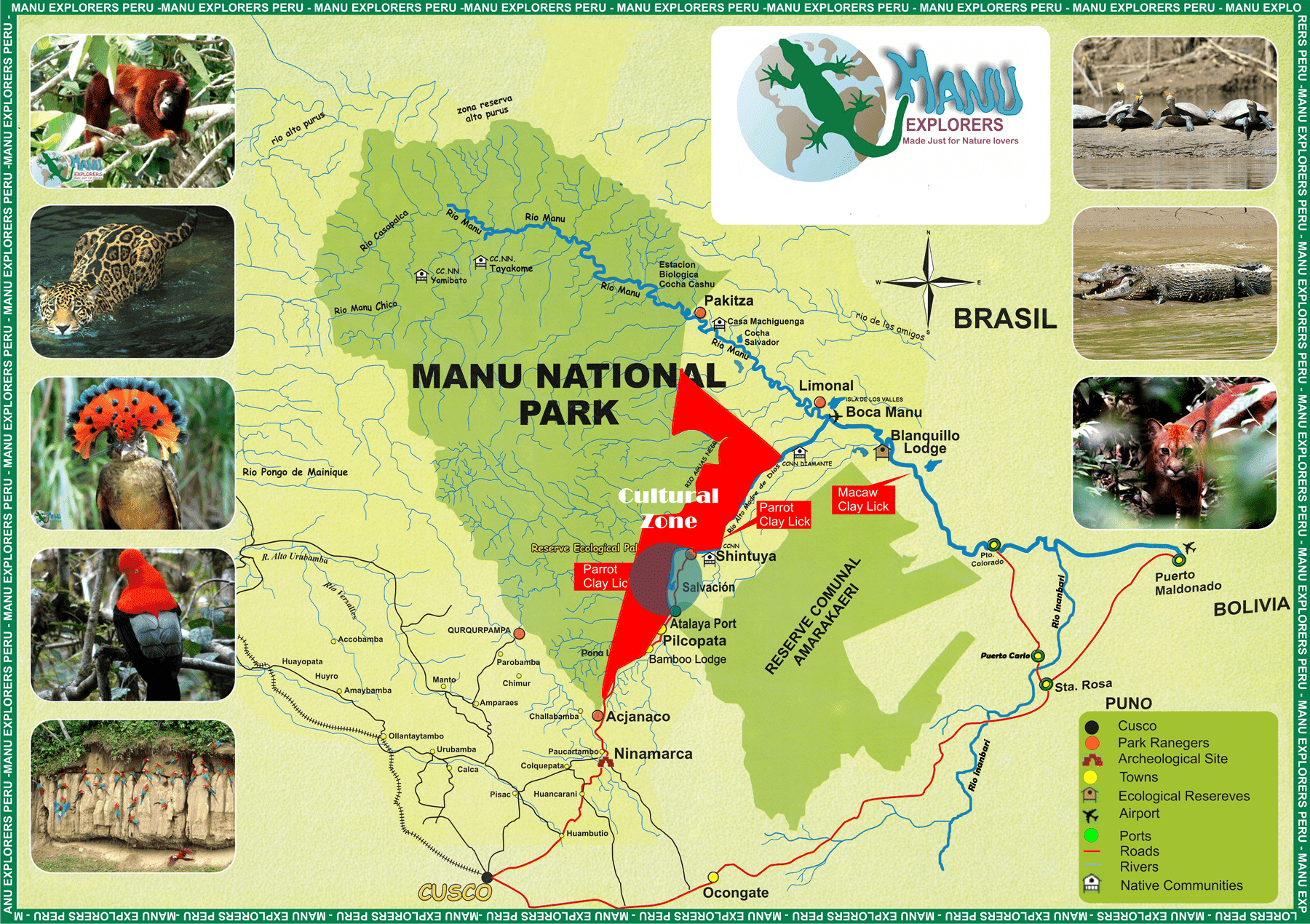
Reserved Zone: this area is strictly dedicated for tourism and any extractive activities like Lumber, farming, fishing and hunting are forbidden. You are allowed access into this area only with permits and in a tour operated by a local tour operator. The following are the tours that visit this area.
- 8 day tour to the Reserved Zone of Manu Park by bus in and out
- 7 day tour to the Reserved Zone of Manu Park by bus in and out
- 6 day tour to the Reserved Zone of Manu Park by bus in and out
- 5 day tour to the Reserved Zone of Manu Park by bus in and out
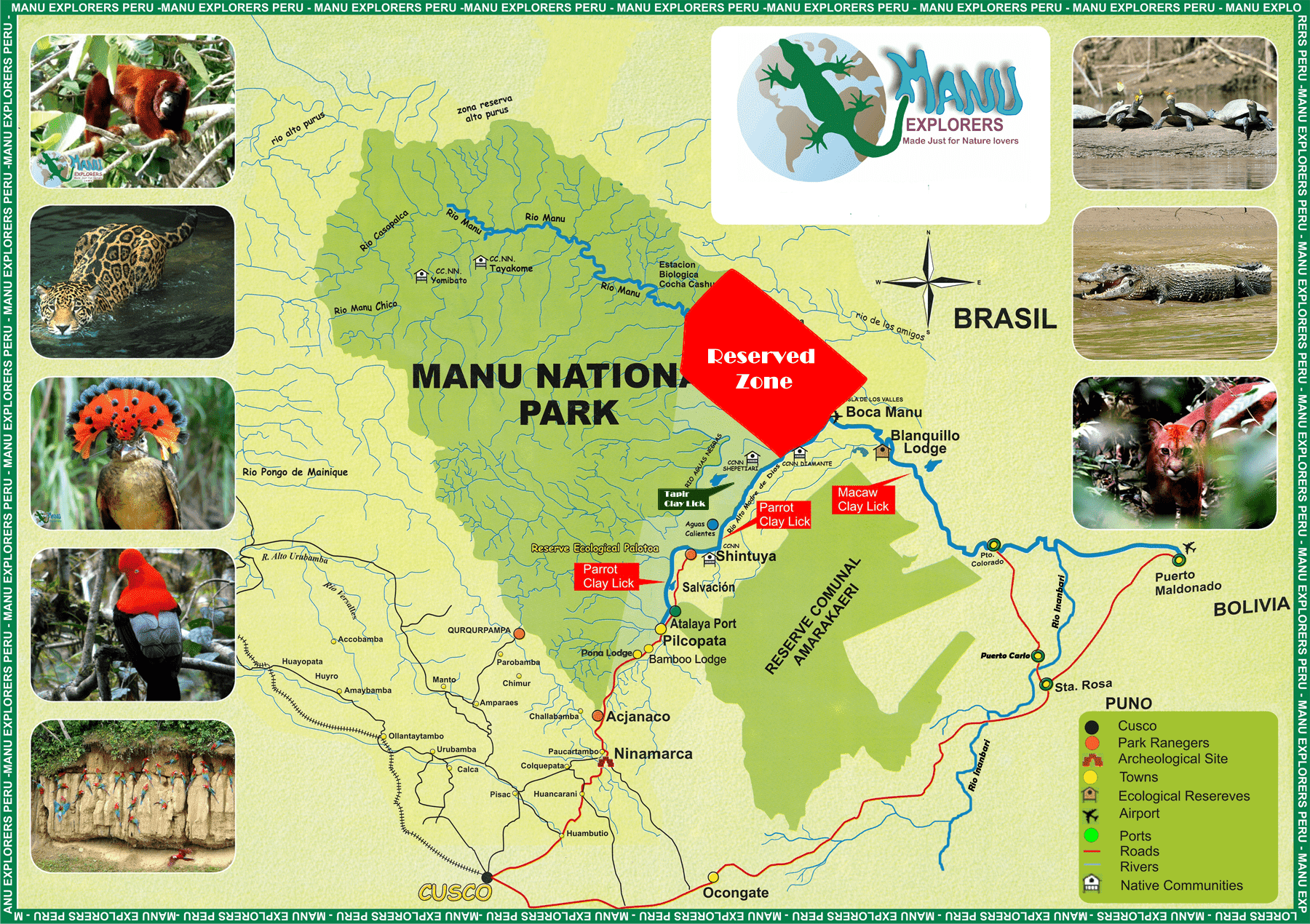
Warm clothes/clothes and shoes
- For this tour please bring warm clothes for the first and the last day because we will be travelling through the Andes reaching an elevation of 3930m. So it’s going to be very cold. Please also bring a windbreaker or a jacked for morning boat rides.
- Please bring only the clothes that you will be wearing during the tour, long pants, long sleeves, extra socks and a hat. Leave some clean clothes in Cusco at tour hotel because if you also take these to the jungle when you return to Cusco they will be very smelly.
- For walks in the jungle we will provide rubber boots but for the first and the last day you must bring hiking boots, please also bring a fitflop for showers and to walk inside your rooms. To move from your room to the dining rooms or somewhere else you must wear rubber boots.
Walking along the Trails
To increase your chances of seeing animals when walking on the trails, please walk slowly, do not step on sticks, lift your feet so as not to make noise, and please do not talk loudly because the animals may hear you from far away. Please also avoid talking in the tapir clay lick.
Smoking:
Please do not smoke on our jungle tours, please remember that our tours are in group service and to avoid discomfort in the other members of the group and to increase your chances of seeing animals and for not scare them away please DO NOT smoke.
Night Walks and the use of flashlights:
If during the night hikes you wish to find your own animals and do not want to wait for the guide to be the only one to show you things please bring with you a good flashlight of at least 1000 lumens and you will be able to enjoy the night hikes more.
Repellent and its proper use:
Please bring with you a mosquito repellent with at least 30% DEET. In the Manu jungle temperatures are between 28 and 32 degrees Celsius and a humidity of 90%, this makes you perspire constantly and therefore the repellent will neutralize faster, please use repellent every two hours, apply repellent on the back of your shirt at the beginning of the day and also apply repellent around your legs just above your rubber boots to prevent ticks from getting on you. We are not responsible if you are bitten by mosquitoes and sand flies.
Cold weather during the dry season:
Every year during the dry season in the Manu rainforest we usually have cold spells, these winds come from Antarctica, pass through Argentina, enter Bolivia and then Manu. During these cold weather temperatures drop to 22 degrees Celsius, although they do not seem very low these temperatures are mixed with humidity and make the wind chill lower than it normally is, unfortunately in these days of cold weather the number of animals that are observed decrease very drastically; however, once the days of cold weather are over all the animals begin to be active again and can be observed in large numbers.
Photography Opportunities:
On our tours you will have many opportunities to photograph flora and fauna. In the cloud forest you can observe colorful birds such as quetzals, trogons, toucans, toucanets and the cock of the rock, in the lower part you will visit a bird garden where you can photograph hummingbirds and within the reserved area you can photograph caimans, turtles, giant otters, monkeys and many more species. Please bring a camera with you!
- Camera with spare batteries.
- Macro camera lenses. 10 - 65 mm
- Long distance camera lenses 200mm, 400mm or 600mm.
- Wide Angle Lenses
- Camera lens extension 1.4x or 2x.
What to bring: please bring the following:
- Repellent with a minimum of 30% DEET 2.
- Binoculars/Binoculars (if you want your own pair)
- Camera with spare batteries
- Flashlight with extra batteries
- Sunscreen
- Money
- Backpack
- Water bottle / cantinflora
- Sandals
- Shirts, socks
- Lightweight pants, shorts and suit/swimwear
- Hat
- toilet paper
- Dark clothes (for hiking days)
- Converter/adaptor for electricity (plugs are typically the 2 flat type found in the U.S.)
Proper use of flashlights at Tapir Clay Lick:
When you are visiting our mammal clay lick to see tapirs, on your shift, please use the flashlight as a way to search the lick for the animal at least every 3 minutes. Please take into consideration that you will have a shift of at least 1 hour to make use of your flashlight to find a tapir.
Tropical diseases:
In the Manu National Park Zone we do NOT have Malaria, Yellow Fever and Dengue, however, proper use of repellent is very important. Please pay attention to the guide's instructions during the briefing about the proper use of mosquito repellent.
Travel Insurance:
The weather conditions in the Highlands same as in Rainforest are unpredictable. The months of April to October are the driest months of the year, but some times during these months and the remainder of the year, we do have some rain and the roads may become inaccessible due to landslips/landslides. For that reason we recommend travel insurance to cover these unpredictable weather conditions, as claims for compensation cannot be considered. The TRAVEL insurance should also cover cancellation of tours, cancellation of flights, accident, loss of personal luggage, hospitalization, etc. We do not accept responsibility for cancellation, loss, tropical medical problems, damage or injury to property or persons.
Additional costs!! We also recommend to have a Travel Insurance to cover itinerary modification due to a safety concern, illness, change of government policy, political instability/strike, etc. There might be additional fees.
For cancellations made after the tour is booked / reserved NO REFUND will be given. If during the tour the client decides to separate themselves from the tour and the rest of the group it will be the responsibility of the client to pay for any expenses that are associated with their early return to Cusco. In case of tour cancellations please ask at our office for a tour cancellation certificate, this certificate will be provided within 24 hours of the request date.
Manu or Tambopata, which is better?
Traveling anywhere in the world is undoubtedly a unique experience that will probably never be repeated and it is for this reason that we take the time and focus to look for the best place to travel which meets our expectations, and it is for this reason that we created this content to explain the differences between the Tambopata Reserve and the Manu National Park Reserve. This article is a simple comparison of flora, fauna, costs and accessibility.
Tambopata Fauna:
- 1,200 species of butterflies.
- 103 species of amphibians,
- 180 species of fish,
- 169 species of mammals
- 103 species of reptiles
- 632 bird species
Fauna of Manu National Park
- 1,300 species of butterflies
- 140 species of amphibians
- 210 fish species
- 223 species of mammals
- 132 species of reptiles
- 1005 species of birds
Flora of Tambopata:
- 1 713 plant species
Flora of Manu
- 4,385 plant species
Accessibility to get to Tambopata:
one of the advantages of the Tambopata Reserve is the ease with which you can get to this, you can reach the Tambopata Reserve by plane from Lima or Cusco and you can also arrive by bus (overnight trip) or reach the place by driving, the trip takes an average of 10 hours.
Accessibility to get to Manu:
There are only two routes to get to Manu, one is by road from Cusco through Paucartambo, Kcosnipata and then the Port of Atalaya and from Atalaya the trip continues by boat until you reach the Reserved Zone. Note that the Manu National Park begins in the Andes at 3500m at 50min from Paucartambo and the lower part which is reached by boat is at 280m. The second way to get to Manu is through the Colorado Port which is reached by car from Cusco or from Puerto Maldonado. From Colorado the trip continues by boat for about 12 hours to reach the Reserved Zone of Manu National Park (lower Manu) this last route is rarely used.
